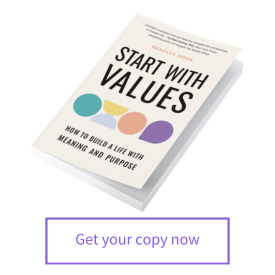The world is experiencing unprecedented levels of change right now, and the people I work with around the globe are understandably grappling with the intensity and pace of it all. In this article, I hope to provide some practical tips for dealing with change and staying resilient, authentic, and positive.
The Nature of Change
Change is an unavoidable constant in our lives. Sometimes, it’s within our control, but often, it’s not. Our jobs, health, economies, and even politics change—and we need to adapt or adjust. However, we often resist change, which causes distress. So why do we resist change? Well, in many biological systems (including social systems), there exists a stable state that is resistant to change. This is a homeostatic state.
Any forces acting upon the system that upset the stable state will trigger what is called negative feedback loops. For example, if I feel hot, I move to a cooler place. This will return the system to stability. This critical process is called homeostasis.
In order to maintain what we perceive as stability, we activate emotions that repel us from potential suffering and pull us towards safety or reduced distress. This is natural. It happens on a cellular level and expands all the way through to how society functions as a whole. In times of uncertainty, we are thrown out of homeostasis and we might feel discomfort or distress.
Emotions and Their Role in Change
Remember, our ancestors lived in an environment of constant change. They traversed the landscape seeking food and shelter while dealing with direct threats to their survival – think lions and tigers. As a result, we’ve inherited the same biological threat detection systems to help us survive. The threats are different now, but the emotions we experience are the same.
The word emotion comes from the Latin movere, which means to move. Recognizing emotions helps us to examine them and discover how we are responding to the challenges in our lives. Developing self-awareness is a lifelong journey, but it can seriously reduce the amount of time we spend at the bottom of the spiral and nudge us up to where we can be more calm, focused, and connected.
Strategy 1: Manage Emotions
The first step in managing emotions is to notice what we’re feeling in real time. How does that email make you feel? How do you feel walking into that meeting? How do you feel reading that news article? Notice when you feel angry, sad, or afraid. Can you fact-check the emotional signal you are receiving? We recommend a simple process: name it, tame it, reframe it.
- Name it: I am feeling annoyed. I am feeling resentful. I am feeling joyful – don’t forget to notice the positive. Describe to yourself why: because of this event. Because of that behavior. Because of this information.
- Tame it: Stop, breathe out, notice your posture, your body. Emotion triggers a physical response. Are you experiencing butterflies in your stomach? Remember, that “fluttery” feeling in the stomach is caused by a reduction of blood flow to the region. When we’re in a fight-flight state, we don’t need digestion – that’s also why the mouth gets dry – and the heart rate increases, and we breathe faster. We’re preparing for a threat. A business meeting is not the right kind of threat for that response but our bodies don’t know that – yet! So exhale, adjust your posture, and give yourself a smile.
- Reframe it: What are some alternatives in this particular situation? I like what author Tim Ferriss asks himself when confronting a challenge: “what if I did the opposite?” It’s a way of breaking our patterns and noticing whether alternatives exist.
For example, “I am feeling apprehensive because I have an important call this afternoon and I don’t think it is going to go well.” Notice I used a more accurate description of my emotion than just saying “I am dreading the call,” or “I am afraid,” or “I hate these calls”. Now I calm myself, exhale, straighten up, maybe strike a power pose. How might I combat my apprehension? Can I do the opposite? Perhaps I can be excited about the call? How about reframing to, “I am looking forward to resolving the issue so that we can move forward.”
Can I use this as an opportunity to explore my resilience and bounce forward, rather than linger down the spiral in a freeze response?

Strategy 2: Values-Alignment in Times of Change
The next area we can all work on is values-alignment. The more aligned your behavior and work is with your values, the more authentic you will feel. Others quickly notice when you are aligned or not.
If you haven’t already, identify the top five values, or behaviors that you believe to be most important to you. Then make sure that you walk the talk in the things that you do. When you work with integrity, a job becomes a life calling. Candor (honesty), respect, appreciation, and altruism are good starts.
There are many articles online that list core human values. Do a search and select your top 5. Check weekly to see how aligned you are. It will guide your decision-making and improve your sense of authenticity.
Strategy 3: Embrace an Infinite Mindset
Finally, I recommend adopting what Simon Sinek calls an infinite mindset. Instead of getting caught up in a vortex of emotions about change, we take a wide angle view of time. Humanity has survived immense adversity and often emerges stronger and more creative than before.
Accepting the past is an important step. The fact that our thoughts can drift into the future is amazing. This allows us to plan, prepare, and imagine. However, keep nudging attention back to the present. This is where we will create the future, so shine your beam of focus back on what is really happening. Make this moment golden and your life becomes a series of golden moments.
We have moved into a new and less predictable normal. Gratitude for what we have is a powerful antidote to worry. When life is stable, we should enjoy it. When life is unpredictable, just like our ancestors experienced it, we need to skillfully adapt and navigate the challenges we face. Recognize emotions – name, tame, reframe. Practice calm so that your nervous system can downregulate rapidly during high pressure moments in your everyday life.
Use your values as a litmus test for your decisions and behaviors. Strive for authenticity. And take a wide perspective of time – we will get through.
✨ Start With Values
Receive $400 of bonus resources with any order of my new book,Start With Values (Penguin Random House).
Written by : Brad Hook
Brad Hook is a writer, podcaster, speaker and entrepreneur. He helps individuals and teams achieve sustainable high performance through inspiring workshops and a powerful suite of digital tools. Discover his new book, Start With Values (Penguin Random House), — available now!
Stay connected with Brad
BE NOTIFIED ABOUT EVENTS and receive the latest tools and tips first
We will never share your email with others.







